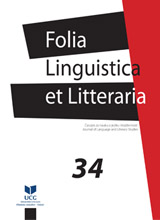Rethinking Language Ambiguity beyond the Semantico-pragmatic Interface
Rethinking Language Ambiguity beyond the Semantico-pragmatic Interface
Author(s): Khadija BelfarhiSubject(s): Semantics, Pragmatics, Philology
Published by: Filološki fakultet, Nikšić
Keywords: ambiguity; linguistic analysis; extension; interactional; free component; pragmatics; semantics; approximation; substitution; non-realization
Summary/Abstract: Ambiguity occurs when the language user intends unspecific and unclear meaning through written or spoken language. It has been approached by semantics, pragmatics and philosophy of language because indeterminate meaning needs a mechanism that assembles the right attributes for decreasing ambiguity. In that, such a mechanism acts away from the structural conditional which was for long thought applicable for clarifying meaning. An extension in the semantic-pragmatic mechanism is needed as far as the latter fails to account for indeterminate meaning. The present paper suggests a more interactional mechanism that integrates two components. The former relies on the linguistic resources that act as possible attributes including both the semantic and pragmatic. The second, however, is the free component wherein the analyst acts in free path that does not necessarily follow the linguistic rules and the fair play aims at extending the attributes and their interaction. The application of this mechanism has been on a variety of ambiguities ranging from the simplest daily metaphors to the most indeterminate utterances. It has been found that its application succeeds with distanced attributes, as when the utterance's meaning is carried out by another far attribute.
Journal: Folia Linguistica et Litteraria
- Issue Year: 2021
- Issue No: 34
- Page Range: 211-233
- Page Count: 23
- Language: English

